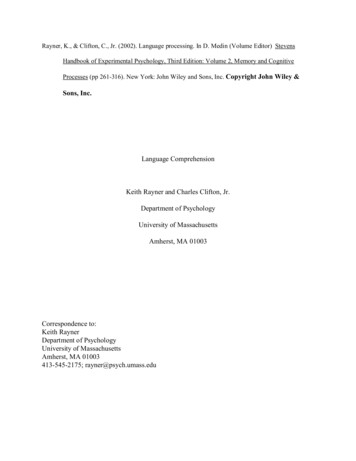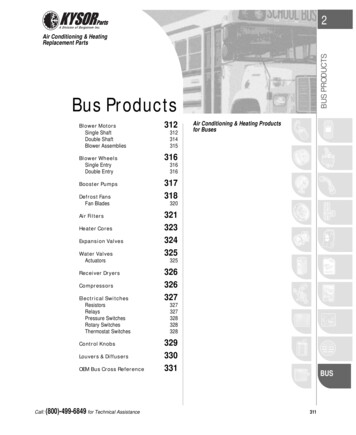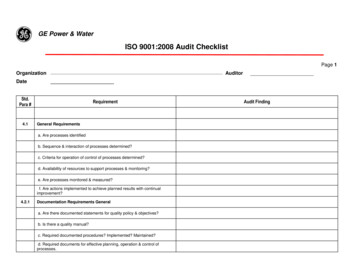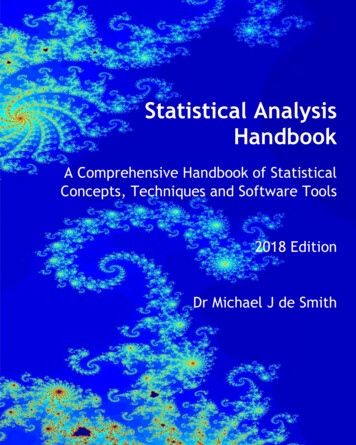
Transcription
Rayner, K., & Clifton, C., Jr. (2002). Language processing. In D. Medin (Volume Editor) StevensHandbook of Experimental Psychology, Third Edition: Volume 2, Memory and CognitiveProcesses (pp 261-316). New York: John Wiley and Sons, Inc. Copyright John Wiley &Sons, Inc.Language ComprehensionKeith Rayner and Charles Clifton, Jr.Department of PsychologyUniversity of MassachusettsAmherst, MA 01003Correspondence to:Keith RaynerDepartment of PsychologyUniversity of MassachusettsAmherst, MA 01003413-545-2175; rayner@psych.umass.edu
In this chapter, we discuss a number of important phenomenon with respect to languagecomprehension. We must acknowledge that to completely review all aspects of languageprocessing would be a task that could hardly be accomplished in an entire book, let alone a singlechapter. So, undoubtedly we will leave out some peoples’ favorite topic in language processing(for more detailed coverage see Garrod & Pickering, 1999; Gernsbacher, 1994). We will discussboth reading and listening with an eye towards reviewing what is known about each domain.The chapter consists of four main sections: (1) tasks and paradigms, (2) comprehending words,(3) comprehending sentences, and (4) comprehending text. In the first section, we brieflyreview the tasks and paradigms that have been used to study language processing. In each of theremaining sections, we discuss (a) the nature of the task, (b) the core phenomena, and (c)representations and models of the specific process.Tasks and ParadigmsThe goal of experimental psychologists who study language processing is to discover howthe complex processes of the mind operate when language is understood. To do so, a number oftasks and paradigms have been developed to observe, record, interpret, and predict the activity ofthe mind. In this section, we will discuss a number of such tasks and paradigms that have beenutilized to study language comprehension processes. Specifically, we will delineate how eachhas been used to examine how people extract meaning from both written and spoken language.Since most of these techniques have been shown to have both strengths and weaknesses, we willalso discuss some of the limitations inherent in various tasks (see Haberlandt, 1994 for a morecomplete discussion of various tasks used to study language processing).2
Reaction time measures.Reaction time measures are arguably the most common procedure for tapping intocomprehension processes, and psycholinguists generally use such measures to examine therelative time-course of a process. Reaction time (RT) is defined as the interval between thepresentation of a stimulus and the onset of the subject’s subsequent response. This interval istypically measured with a high degree of precision (e.g., in milliseconds), and response typesvary from simply naming the stimulus to making a more complex decision, such as decidingwhether two words are related in meaning to one another.Naming, lexical decision, and categorization. In the naming task, subjects are asked toarticulate a word or a pronounceable nonword and reaction times are measured from thepresentation of the stimulus to the onset of the named response. By contrast, in the lexicaldecision task, subjects must decide whether a letter string is a word (e.g., desk) or a nonword(e.g., dosk), with reaction times measured from the presentation of the letter string to the onset ofthe word/nonword response. A third task is categorization, in which subjects must judge whetheror not a given word belongs to some predetermined category (Is it a living thing?). For the mostpart, in our discussions below, we will focus on results from naming and lexical decision sincethese tasks have been used more frequently than categorization to study language processing.In the past, the most popular usage of naming and lexical decision has been to determinethe time-course of visual word identification. For example, when factors such as word lengthand syntactic class are controlled, naming and lexical decision times for high frequency (morecommon) words are shorter than those for low frequency (less common) words. However, oneproblem with such tasks is that overall response time is not simply a measure of word3
identification, since both naming and lexical decision times also include the time it takes asubject to formulate and initiate the appropriate response for the task (i.e., an articulation or amanual button-press). Furthermore, it is not clear whether such responses even require thesubject to identify the stimulus. The naming task, for example, simply permits the subject topronounce a string of letters based upon grapheme-to-phoneme conversion rules withoutnecessarily requiring that word meaning be accessed (e.g., most people can formulate apronunciation for blicket, although no corresponding meaning exists in the dictionary). Similarly,in the lexical decision task, subjects may be able to judge whether a letter string is a word bysimply basing their decision on the familiarity of the letter string rather than on the actualidentification of the word. This does not necessarily mean that these tasks are insensitive tosemantic properties of words — quite the contrary, naming and lexical decision tasks have beenshown to exhibit effects of word frequency and familiarity, which would be unlikely unless someaspect of word meaning was accessed. Despite these limitations, response times in these tasksmay be used to classify the upper limits of the time course for word recognition. However, manyresearchers have used naming and lexical decision tasks in conjunction with other tasks todetermine whether the patterns of reaction times converge (see Taft, 1991).Priming and masking. Two methodologies have emerged which are often used inconjunction with naming and lexical decision. The priming paradigm (Meyer & Schvaneveldt,1971) involves the presentation of a sequence of two words: a prime then a target. Subjects areasked to make a decision regarding the target word, and how quickly they are able to respond ismeasured. An early finding that emerged from priming studies is that when the prime issemantically related to the target (e.g., dog followed by cat), subjects respond more quickly than4
when the prime is not semantically related to the target (e.g., pen followed by cat). This indicatesthat the relationship between prime and target words influences processing time on the target.A second paradigm, masking, also examines word identification time by limiting theexposure of a stimulus. For example, the word dog is presented for 60 ms (and then disappears)and is replaced by a pattern mask consisting of either a series of x’s, random letters, or letter-likeshapes. Although reaction time is often measured in masking studies, the more commonprocedure is to measure accuracy. As with many reaction time measures, the masking paradigmhas been useful in allowing researchers to examine the time course of lexical processing. Studiesutilizing masking techniques also suggest that subjects may extract information from wordswhich are presented for such a brief duration (e.g., less than 30 ms) that they are not aware of theprime words identity (Balota, 1983; Marcel, 1983).More recently, a paradigm which combines priming and masking procedures, maskedpriming (Forster & Davis, 1984), has been used to shed light on the early stages of wordcomprehension. In this paradigm, subjects look at a fixation target and a mask is presentedfollowed by the brief presentation of a prime word which is then followed by a target word(presented for about 200 ms) which is in turn followed by another mask. Although subjects aregenerally unable to identify the prime word, it still has an effect on their report of the target word.Dual tasks and phoneme monitoring. The dual task paradigm is often used to studyattentional processes, and it follows two basic assumptions: (1) that subjects have a limitedprocessing capacity and (2) that different cognitive activities may make use of differentprocessing resources. For example, subjects may be asked to read sentences while listening for atone. If response times are slower when performing two tasks simultaneously as compared to5
performing a single task (e.g., simply reading sentences), this would be evidence that both tasksare drawing upon the same cognitive resources. Further, the rate of slowdown may also indicatethe degree of resource utilization.One example of the dual task paradigm is phoneme monitoring. Most often, phonememonitoring is used to study speech comprehension, and it involves listening to auditorilypresented sentences while monitoring for a particular phoneme (e.g., to detect the /b/ sound whilelistening to the sentence The emperor went to the royal baths.). Thus the two tasks are tocomprehend the sentence and to press a button when the target phoneme is detected. The idea isthat if contextual or lexical processing prior to the target word (e.g., baths in the example) isdifficult, it should take subjects longer to detect a target phoneme. For example, subjects areslower to detect a phoneme when the target word is preceded by an ambiguous word.Researchers utilizing this task are often interested in determining the basic units of speechperception or in studying the processing complexity of sentence contexts, lexical ambiguity, andattentional issues. However, the data emerging from phoneme monitoring tasks are oftenaffected by a number of extraneous variables such as the frequency of targets across sentencestimuli, the discriminability of the phoneme, target word length, and the frequency of the targetword in which the to-be-detected phoneme is located.Speed accuracy tradeoff. In addition to the dual task paradigm, another technique putssubjects under various types of speed constraint. For example, one variation of the techniqueinvolves training subjects to respond immediately upon the presentation of a signal that occurs atvarious times after the end of a sentence. Accuracy of a decision made about a sentenceincreases as the response deadline increases. The parameters of the function with which6
accuracy increases as the response deadline increases can reveal information about processingactivities (McElree, 1993). The major concern with this technique is that it may induce strategiesthat are specific to the demands of the task.Processing time and other measures to assess comprehension.The reaction time measures discussed above are most commonly used when the unit ofinterest is a single stimulus (e.g., a word). Researchers interested in examining readers’comprehension of larger units, such as sentences or sentence phrases, use one of a variety ofprocessing time methodologies. By manipulating characteristics of the text, researchers can inferselected attributes of comprehension processes. In these tasks, subjects may be asked to read aparagraph or sentence while elapsed reading times are recorded (so that paragraph reading timeor sentence reading time is measured). Similarly, subjects may be given a limited amount of timeto read a portion of text while error rates are recorded.Self-paced reading and listening. Sometimes, if an experimenter is interested in howlong it takes a subject to read a particular segment of text, measuring overall reading times forsentences or paragraphs may be too imprecise. In the self-paced reading task, the experimentercontrols the amount of text that the subject can see at any one time, and the size of the segment(e.g., a word or a phrase) available to the subject is generally a function of the topic underinvestigation. When the subject has finished reading one segment, s/he pushes a button and thenext segment of text is presented. When only one word at a time is presented, this procedureyields a processing time measure for each word in the text (Just, Carpenter, & Woolley, 1982).A variation of this task is called the "stops making sense" task, in which subjects advance wordby-word through a sentence as long as it makes sense; when the sentence no longer makes sense,7
or becomes ungrammatical, subjects push a different button (Boland, Tanenhaus, & Garnsey,1990).One problem with the self-paced reading task is that it does not mimic natural reading.Reading times in the self-paced reading paradigm are slower (about half as fast) than those inmore natural reading tasks since subjects must press a button to read subsequent segments oftext. Since it takes longer to manually press a button than it does to move the eyes, words stay onthe screen for about 400 ms in this task, as compared to average eye fixation times ofapproximately 250 ms in natural reading. Given that reading in the self-paced paradigm isslower in general, one possibility is that subjects may develop different comprehension strategies.More recently, self-paced listening paradigms (Ferreira, Henderson, Anes, Weeks, &McFarlane, 1996) have been developed to study speech perception. Just as in the readingsituation, the listener pushes a button to get the next word or segment of discourse. Similarconcerns regarding strategic effects also apply to this paradigm.RSVP. Natural silent reading involves moving the eyes to successive segments oftext—hence the reader controls how quickly text is read. By contrast, in the rapid serial visualpresentation (RSVP) task (Potter, Kroll, & Harris, 1980), the experimenter controls the rate atwhich text is presented. In this paradigm, the subject sits in front of a computer screen whilenew words are presented one at a time for various durations (e.g., 50 to 400 ms). Studiesutilizing this technique have found that readers can comprehend short passages of text which arepresented at rates of up to 1,200 words per minute, with a new word being presented every 50ms. Interestingly, when each word is presented for 250 ms, reading comprehension in the RSVP8
task is often better than in natural reading. However, this paradigm has critical limitations.Although comprehension performance is high for short passages of text, as the amount of textincreases, comprehension begins to suffer (Masson, 1983). This is partially because RSVPreading prevents readers from looking back at “misunderstood” portions of text (during normalreading, readers make move their eyes back to previously read text on approximately 10% of alleye fixations). Moreover, RSVP reading is also mentally taxing for subjects, as it requires theirconstant attention to text.Phoneme restoration. The self-paced reading and RSVP tasks described are generallyutilized to measure higher-order cognitive comprehension processes in reading. In contrast, thephoneme restoration effect has most commonly been used to measure lower-order, perceptualprocessing in listening. The phoneme restoration effect is an auditory illusion that arises whenpart of an utterance is replaced by an extraneous sound such as a cough or white noise. In suchinstances, listeners often perceptually fill in (restore) the missing phoneme and report that theyheard the complete utterance (Warren, 1970). Early studies using this method found thatpsychoacoustic factors related to the nature of the replacement sound (e.g., amplitude andquality) affected the probability of detecting the missing phoneme (Warren & Obusek, 1971).Subsequent studies have used the restoration effect to examine the extent to which lexical andhigher-level representations can influence speech perception (Samuel, 1981, 1996). Samuel(1996) notes that, while effects emerging from the phoneme restoration paradigm are real, theparadigm is sensitive to small changes in methodology, e.g., differences in the syllabic length ofthe carrier word, the phonological class of the replaced segment, and the quality of the replacingsound.9
Eye movementsWith the continuing development of technological innovations, some researchers havebegun to replace or supplant reaction time and processing time paradigms with eye movementmeasures. In a typical eye-tracking experiment, subjects read sentences presented on a computermonitor while their eye movements are recorded. Researchers then look at patterns of readers’eye movements noting, for example, how long readers’ eyes remain fixated on words or phraseswithin sentences, how far their eyes move from fixation to fixation, or how frequently their eyesregress back to re-read text.Eye movements have been utilized to study a variety of language comprehensionprocesses, and data gleaned from eye-tracking studies have been found to reflect moment-tomoment cognitive processes. One early finding was that where readers look and how long theylook there is directly related to the ease or difficulty of cognitive processing (see Rayner, 1978,1998). For example, when extraneous factors are controlled, fixation times are longer for lowerfrequency words, which are less likely to be encountered during reading, as compared to higherfrequency words, which are more likely to be encountered. Eye movements have also been usedto examine the effects of lexical ambiguity, morphological complexity, discourse processing,semantic relatedness, phonological processing, syntactic disambiguation, and the perceptual span(see Rayner, 1998; Rayner & Sereno, 1994, for reviews).Eye-movement contingent display changes. A number of methods have emergedwithin the eye-tracking paradigm including the development of the eye-movement contingentdisplay change paradigm (see Figure 1). In this paradigm, text displayed on a computer screen ismanipulated as a function of where the eyes are fixated. As readers’ eyes move across a line of10
text, letters or words may be modified in foveal, parafoveal, or peripheral locations, thusallowing the experimenter to control the nature and amount of information available to thereader. One variation of the eye-movement contingent paradigm is the moving windowparadigm (McConkie & Rayner, 1975; Rayner & Bertera, 1979). In this paradigm, as readersmove their eyes across the text, upon each fixation, text is exposed within an experimenterdefined “window” while all text outside of the window is altered in some way (e.g., all of lettersmight be replaced by X’s). Wherever the reader looks, the text within the window is available.The logic of the paradigm is that when the window is as large as the region from whichinformation can normally be obtained, reading will proceed as smoothly as when there is nowindow (normal text). Using this technique, the size of the perceptual span in reading has beendetermined.Insert Figure 1 about hereAnother variation is the boundary paradigm (Rayner, 1975), in which characteristics of atarget word in a particular location within a sentence may be manipulated. For example, in thesentence John composed a new tune for the children, when readers’ eyes move past the spacebetween new and tune, the target word tune would change to song. In this manner, researcherscan examine the types of information (e.g., orthographic, phonological, semantic) that readersobtained from the target word prior to fixating upon it. Indeed, readers do process a target wordmore quickly (preview benefit) when they have had a preview of that word.A final variation is the fast-priming paradigm (Sereno & Rayner, 1992), in which a primeword is briefly presented for a very short duration (i.e., less than 50 ms) and is immediatelyreplaced by a target word. Primes may be related in meaning to target words (tune-song), but11
they may also be phonologically related (e.g., bat-cat) or orthographically related (e.g., benchbeach). This paradigm has been used to examine the time course of word processing. Anadvantage of using eye-movement measures over reaction time and processing time measures isthat they allow researchers to study comprehension processes in a more natural setting. Asmentioned previously, one disadvantage of reaction time and processing time measures is thatthey may result in the formulation of task-specific strategies or may simply slow the readingprocess. In the eye-movement paradigm, readers are free to read text as they would duringnormal reading. Moreover, eye movement measures are flexible, allowing researchers toexamine both fine-grain and coarse-grain language comprehension processes.Eye movements and listening. Eye movement recording techniques have also beenutilized in the context of speech understanding. It has been demonstrated that when subjectslisten to a narrative while a scene is presented in front of them which depicts objects in thenarrative, their eyes tend to move to those objects that are mentioned in the narrative. Thistechnique, often called the head-mounted eyetracking technique, allows researchers to makeinferences about on-line speech comprehension (Tanenhaus & Spivey-Knowlton, 1996).Physiological measuresIn the past 20 years, a number of physiological measures have been developed to studycognitive processes. These measures range from simply recording heart rate to recording morecomplex physiological activity, such as measuring changes in brain activity. It is hoped that byusing such measures, researchers will be able to accomplish two major goals: (1) to locatelanguage comprehension regions (or pathways) in the brain and (2) to more closely examine thetime course of cognitive activity within the brain. Although there are many physiological12
measures, in this section, we will focus only on those measures which involve examining activityin the brain (see Gazzaniga, 2000 for a more complete review of physiological measures).ERP. Among the most common physiological measures used today is the event-relatedpotential or ERP (Kutas & Van Petten, 1994) which involves measuring electrical events in thebrain using electrodes placed on the scalp. By averaging electrical potentials over a number oftrials, researchers hope to time-lock brain activity to a particular sensory event (e.g., thepresentation of a word stimulus). The voltages associated with brain activity vary in bothpolarity and magnitude over time, resulting in a series of electrical “peaks and valleys”. Forexample, when subjects are presented with a semantic incongruity, a relatively large negativepotential (i.e., a valley) occurs about 400 ms after the presentation of the stimulus (this is termeda N400 wave).One advantage of using ERP’s over other methodologies is that they allow experimentersto more directly examine the time course of language comprehension processes within the brainitself. On the other hand, there is no guarantee that the ERP activity being measured is the directresult of a particular cognitive process, as opposed to being the result of later (e.g., memory)processing. While ERPs have very good temporal resolution, much of the research has focusedon late occurring waves. One problem here for reading is that since various effects occur within250 ms (as evidenced by eye movement data), the events reflected in the late occurring ERPsignal take place after the relevant processing activities have occurred. So, if a certain effectshows up during an eye fixation (less than 250-300 ms), examining the same effect in the N400doesn’t seem to provide direct information about the time course of the effect (Raney & Rayner,1993; Sereno & Rayner, 2000a). Thus, it may be worthwhile to examine earlier occurring ERP13
waves than has typically been the case (Sereno, Rayner, & Posner, 1999).PET. Positron-emission tomography (PET) scans (Petersen, Fox, Posner, Mintum, &Raichle, 1989) are based on a different framework than ERP’s. This method involves theingestion of a small amount of radioactive material which may be traced and used to measureblood flow in the brain; cognitive activity is indexed by changes in blood flow to active parts ofthe brain. Studies using PET scans have found that many different parts of the brain are involvedin language comprehension (including parts of the left temporal, parietal, and frontal cortex).This complexity is perhaps the greatest disadvantage to the PET methodology. It is notsurprising that language comprehension involves the coordination of a number of brain systems,but the metabolic activity measured by PET scans may also reflect additional processing notdirectly related to language. For example, researchers have found increased metabolic activity inbrain systems which are not specific to language processing per se. Specifically, studiesexamining reading processes have found increased metabolic activity in the anterior cingulatecortex, which is normally associated with sustained attentional processing, as well as in thecontralateral cerebellum, which is thought to be involved in the rapid shifting of attention.MRI/fMRI. Magnetic resonance imaging, or MRI, and its newest counterpart, functionalmagnetic resonance imaging, fMRI (Buckner, 1998), are based on framework similar to that of aPET scan—namely, that sensory, motor, and cognitive tasks produce a localized increase inneural activity which gives rise to subsequent increases in blood flow. In very general terms,MRI is based upon how cells that are relatively rich or poor in oxygen respond to a magneticfield; fMRI reflects in changes in blood flow while a subject is engaged in a cognitive task.Researchers utilizing MRI technology to examine language processes are typically interested in14
localizing language comprehension functions in the brain. For example, in a baseline conditionan experimenter may present subjects with a word and simply require the subject to look at theword. In another condition, subjects may be asked to decide whether the word represents a livingthing. Differences in neural activity between the two conditions can then be used to determinethe region in the brain used in processing aspects of word meaning.One advantage of the MRI/fMRI paradigm is that it is relatively non-invasive andrepresents little health risk to subjects (as opposed to PET scans which involve the ingestion ofpotentially harmful radioactive materials). In addition, they permit the experimenter to collecthundreds (or even thousands) of images from a single subject, with highly accurate spatialresolution. MRI technology is also becoming increasingly available to psycholinguists, as manyhospitals have MRI facilities.The MRI/fMRI paradigm also suffers from several disadvantages. The most significantlimitation is that temporal resolution is relatively poor (e.g., although it may only take about 250ms to recognize a word, an fMRI can only acquire data in about 2-3 seconds), thus disallowingany clear examination of the time course of language processing. However, some scientists havealso begun to combine the temporal resolution of ERPs with the spatial resolution of fMRI’s. Inaddition, as mentioned earlier in reference to PET scans, a great deal of activity in the brainoccurs which is only indirectly related to language functions, resulting in some degree ofdifficulty in localizing areas in the brain specific to language comprehension.We have presented the physiological based methods for the sake of completeness.However, the bulk of the research discussed in this chapter comes from methodologies andparadigms other than the brain imaging methods (e.g., PET and fMRI). The reason for this is15
quite simple - research on language comprehension using brain imaging is only in its infancy andat this point there are very few imaging studies that really elucidate our understanding oflanguage processing. To be sure, such techniques have revealed a great deal about which brainregions are active during various types of language processing, just not that much aboutprocessing per se. However, we expect that in the near future many such studies will appear.Word RecognitionThe nature of the taskClearly, recognizing the individual words in texts and discourse represents the first stagefor understanding language. Some would undoubtedly argue that grapheme (letter) or phoneme(the smallest sound unit) recognition, as well as morpheme (the smallest meaningful unit)recognition necessarily must precede word recognition and there have been lively research effortsin pursuit of understanding the recognition of these three units. However, given spacelimitations, we will focus first on the word before moving to sentence and discoursecomprehension.Considerable effort has been devoted to understanding how words are recognized duringreading and listening. If language comprehension consisted only of recognizing individualwords, the task for researchers interesting how language is understood would be considerablyeasier than it is. But, words do not occur in isolation and exactly how individual words areintegrated into a discourse representation is an interesting question. Much of the research onvisual word recognition has focused on how readers access the meaning of a word. In traditionalmodels of word recognition, meanings of words are represented in the reader’s lexicon (or mentaldictionary where information about a word, such as its meaning is stored). In these models (Fig16
2), there are two pathways, one from graphemic units to meaning directly, and one fromgraphemic units to phonological units, and then to meaning (the phonological mediationpathway). In this Dual Route Model (Coltheart, 1978; Coltheart, Curtis, Atkins, & Haller, 1993,Coltheart, Rastle, Perry, Langdon, & Ziegler, 2001), the direct pathway can be used for wordsthat become highly familiar and must be used to read so called “exception words” (e.g., café) forwhich an indirect phonological route would fail. And the phonological route must be used toread pseudowords (e.g. nufe) for which there is no lexical representation to access. These issuesof mediation and one-or-two routes are central points of contrast between traditionalrepresentational models and more recent alternative theoretical models.Insert Figure 2 about hereThese alternative models share the idea that words are not represented in a mentallexic
Rayner, K., & Clifton, C., Jr. (2002). Language processing. In D. Medin (Volume Editor) Stevens Handbook of Experimental Psychology, Third Edition: Volume 2, Memory and Cognitive Processes (pp 261-316). New York: John Wiley and . The goal of experimental psychologists who study language p










